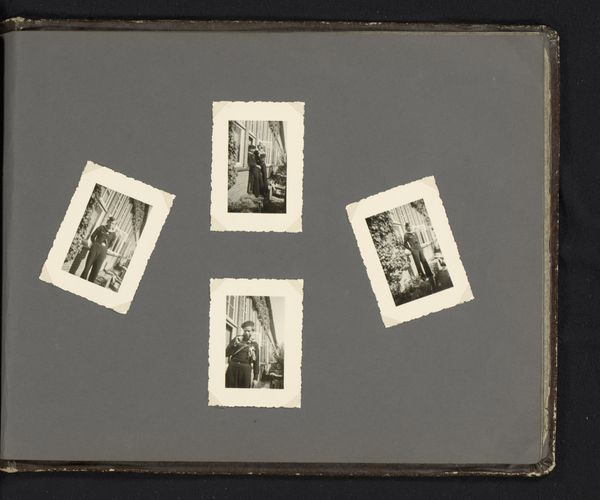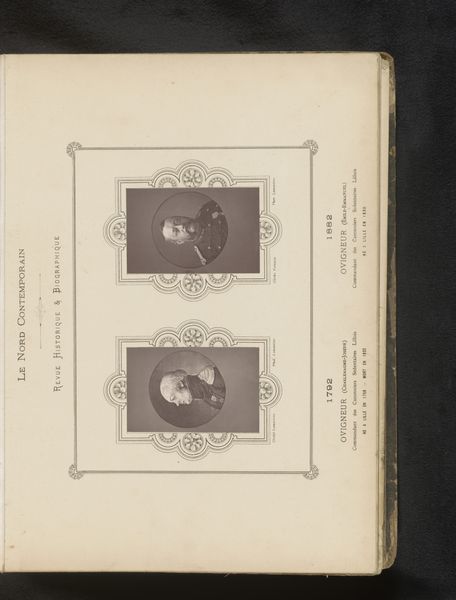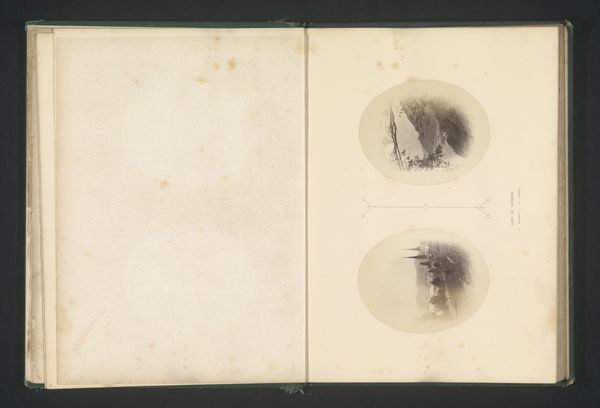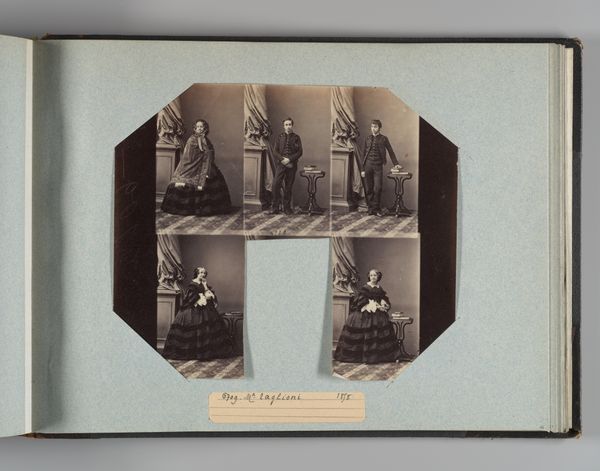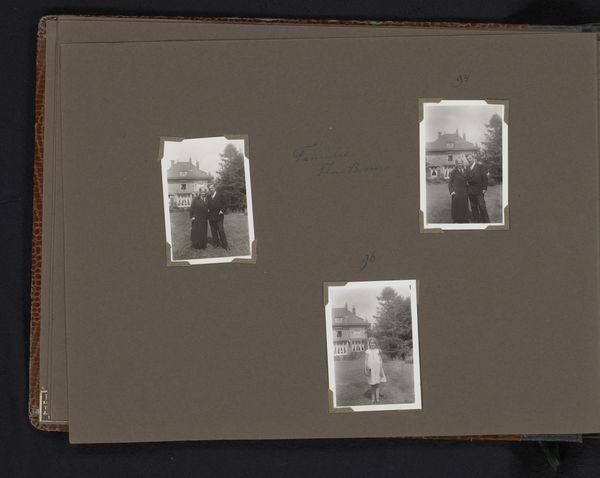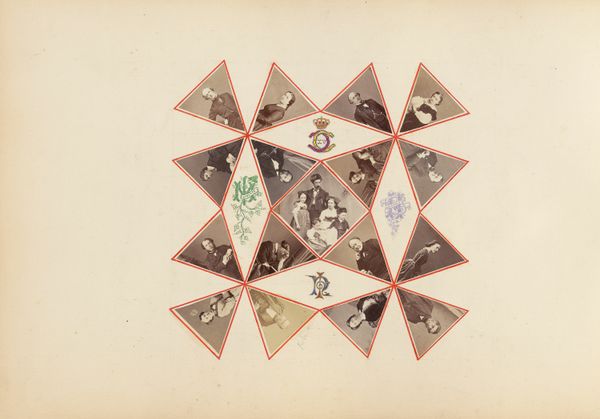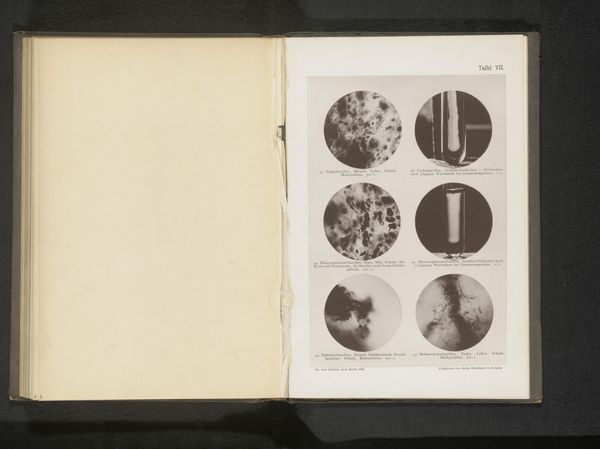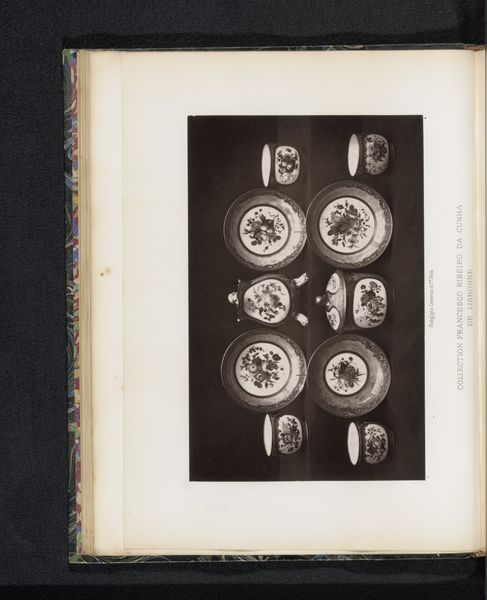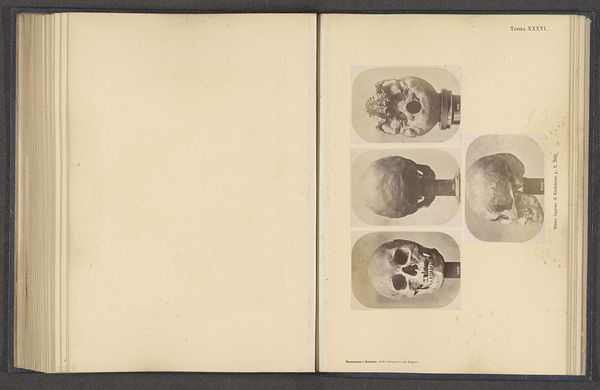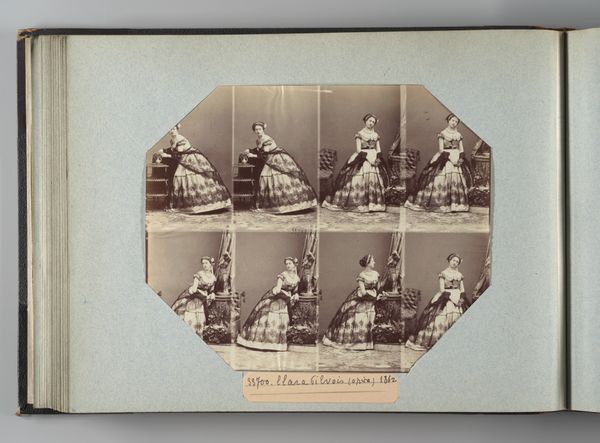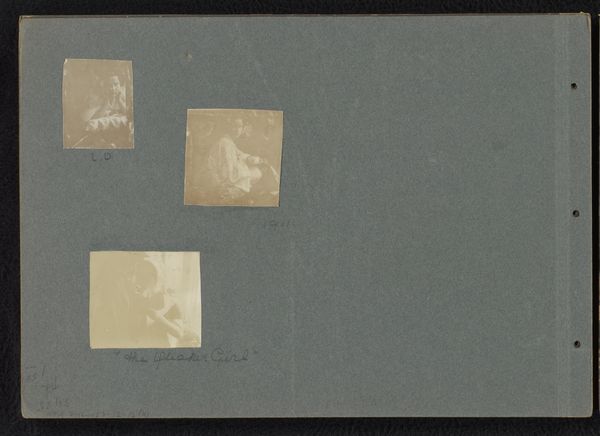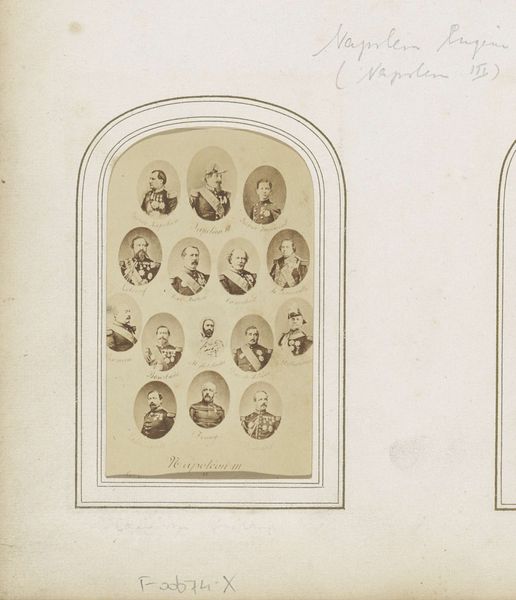
photography, albumen-print
#
portrait
#
photography
#
albumen-print
Dimensions: Image: 7 3/8 × 9 1/4 in. (18.8 × 23.5 cm) Album page: 10 3/8 × 13 3/4 in. (26.3 × 35 cm)
Copyright: Public Domain
Curator: What strikes me immediately is the seriality of the composition. Editor: Absolutely. This albumen print, created by André-Adolphe-Eugène Disdéri sometime between the 1850s and 1860s, showcases multiple views of the same subject across eight medallions, almost like a proof sheet before mass production. We see it displayed in an album at The Metropolitan Museum of Art in New York. Curator: Yes, this arrangement does offer a variety of perspectives on gender expression and class. The style suggests the visual language around portraying powerful female figures but it begs the question: are these depictions empowering or limiting? What’s the social expectation and cultural moment being documented? Editor: I see your point. Disdéri’s use of albumen printing is also interesting, especially within the broader history of photographic portraiture. Albumen printing would have created a glossy finish that enhances the visibility and detail of these figures; a chemical and industrial process allowing replication with sharp resolution was new at the time. How did these technical developments play into consumerist desire and contribute to popular culture during the mid-19th century? Curator: It also suggests a controlled construction of identity for public consumption, even perhaps the celebrity of female figureheads throughout time. Consider Foucault's theories on power dynamics, on how even the act of documenting someone reinforces prevailing norms or perhaps challenges them… who were these women portrayed? How might we look through their images to the way in which identity, gender, and power are being encoded into culture? Editor: Exactly! Thinking about the materiality further, the creation and distribution of these portraits using industrial means would have played a key role in constructing those prevailing norms, influencing broader aesthetic tastes of gender, race, and status across Europe. By observing process, scale, and repetition, we begin to decode systems that shape culture and value. Curator: Looking at it this way provides new levels of seeing the artwork: not merely capturing likenesses, but actively engaging in shaping broader cultural narratives through its medium. Editor: Agreed; Disdéri’s albumen print transcends mere aesthetics to become a site of social inquiry, demonstrating the inherent interconnectedness between artistry, craft, and commerce.
Comments
No comments
Be the first to comment and join the conversation on the ultimate creative platform.
